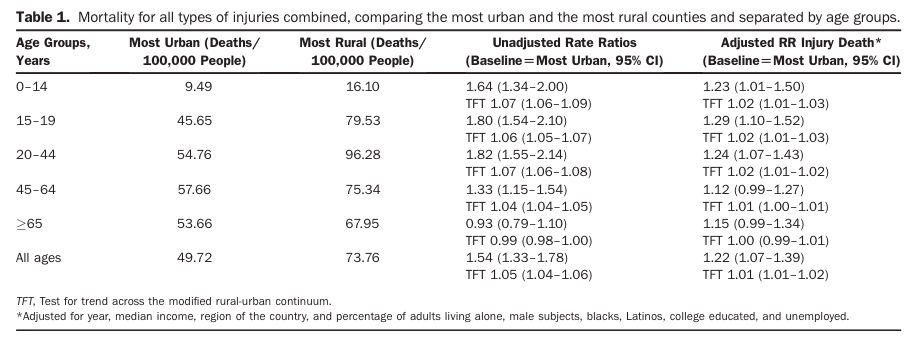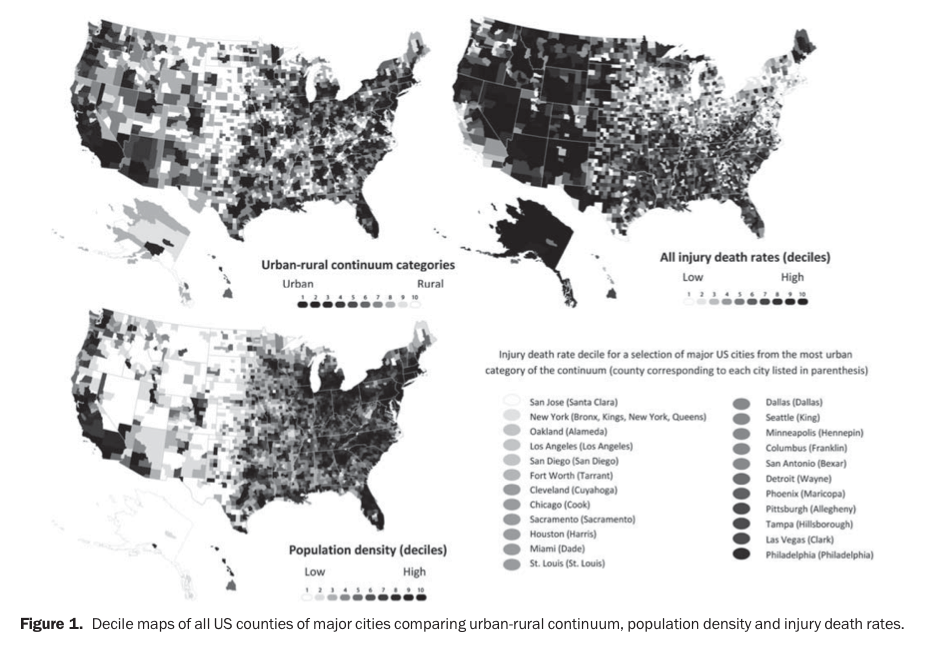ANNALS OF EMERGENCY MEDECINE
Introduction
Background
By 2008, more than half of the world’s people was living in urban areas for the first time in human history. This growing urbanization of global populations has been called an emerging humanitarian disaster, partly because of prominent urban safety hazards such as injuries. In contrast, during the past few decades the United States has experienced unprecedented reductions in population in many of its largest cities and population centers. The reasons for these reductions include the movement of jobs and housing outside of cities, differences in the quality of public education and municipal services, and levels of crime and blight in many city centers. Among these reasons for urban flight in the United States, the perception of crime risk has been perhaps the most publicized and influential.
Importance
From 1999 to 2006, nearly 1.3 million people died of injuries in the United States. Most of these people were younger than 45 years and lived in urban areas. This might be interpreted as suggesting that young urbanites bear the greatest burden of injury-related mortality risk in the United States and, by extension, that large US cities are unsafe places to live and work. In addition, previous work on US homicide and crime victimization also supports the notion that injury risk is concentrated in large US cities.10 However, it is possible that the actual safety risk in urban America is exaggerated and that the true risk experienced by urban inhabitants is lower than commonly perceived.11 Paradoxically, research also exists suggesting that rural areas bear a disproportionately high level of risk for certain serious injuries such as suicide and motor vehicle injuries, raising the possibility of increased safety threats to rural inhabitants.
Goals of This Investigation
These different points of view—urban areas unsafe on the one hand, rural areas unsafe on the other—are driven by analyses that focus only on specific types or causes of injuries and by the individual ability to misconceive risk. We seek to remedy this by analyzing injury death rates of all types across all US geographies, from big cities to small towns. Creating a fuller understanding of the injury-related mortality risk across the United States can also inform the evaluation of trauma systems, given our understanding of the importance of timely access to trauma care and the difficulty of accessing trauma care in many rural areas. In fact, one of the objectives of the Department of Health and Human Services’ Health People 2012 initiative is to increase access to trauma care in the United States and an understanding of where services are needed will inform
the implementation of this initiative. In addition, targeted injury prevention has been previously described as a way to increase effectiveness and efficiency of prevention work, and understanding how the risk of injury by mechanism differs across various environments will aid in this effort. Finally, staffing of emergency departments (EDs) is known to vary across the rural urban landscape, with rural hospitals being significantly less likely to be staffed by emergency physicians. Understanding the injury mortality distribution across rural areas can help inform the debate over the future and planning of the ED workforce and the emergency care system as a whole. Therefore, to address all of these goals, we will examine the relative risk of injury death across the rural-urban landscape in aggregate, as well as by age and mechanism subtype.
Read full report (PDF) here: Safety in Numbers
About Annals of Emergency Medicine
www.annemergmed.com/
“Annals of Emergency Medicine, the official journal of the American College of Emergency Physicians, is an international, peer-reviewed journal dedicated to improving the quality of care by publishing the highest quality science for emergency medicine and related medical specialties. Annals publishes original research, clinical reports, opinion, and educational information related to the practice, teaching, and research of emergency medicine. In addition to general emergency medicine topics, Annals regularly publishes articles on out-of-hospital emergency medical services, pediatric emergency medicine, injury and disease prevention, health policy and ethics, disaster management, toxicology, and related topics. The journal welcomes submissions from international contributors and researchers of all specialties.”
Tags: Annals of Emergency Medicine, Are Major Cities the Safest Places in the United States, Safety in Numbers








 RSS Feed
RSS Feed